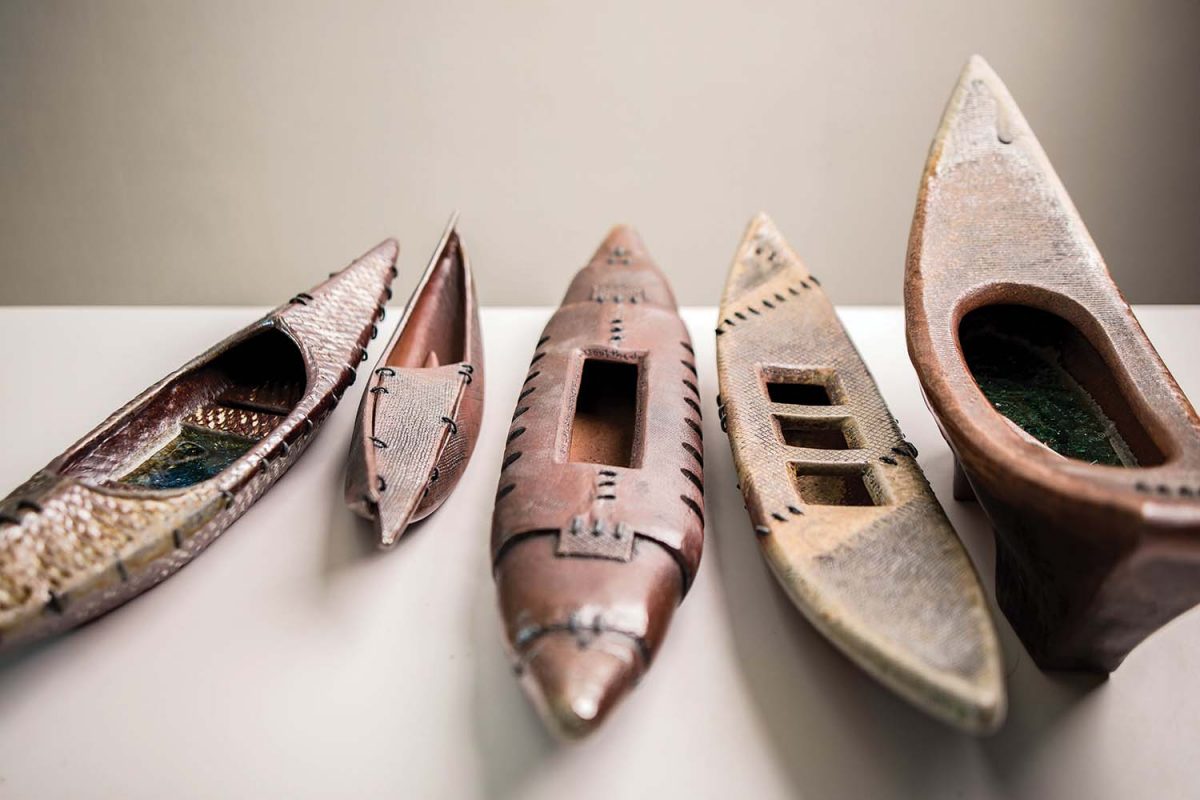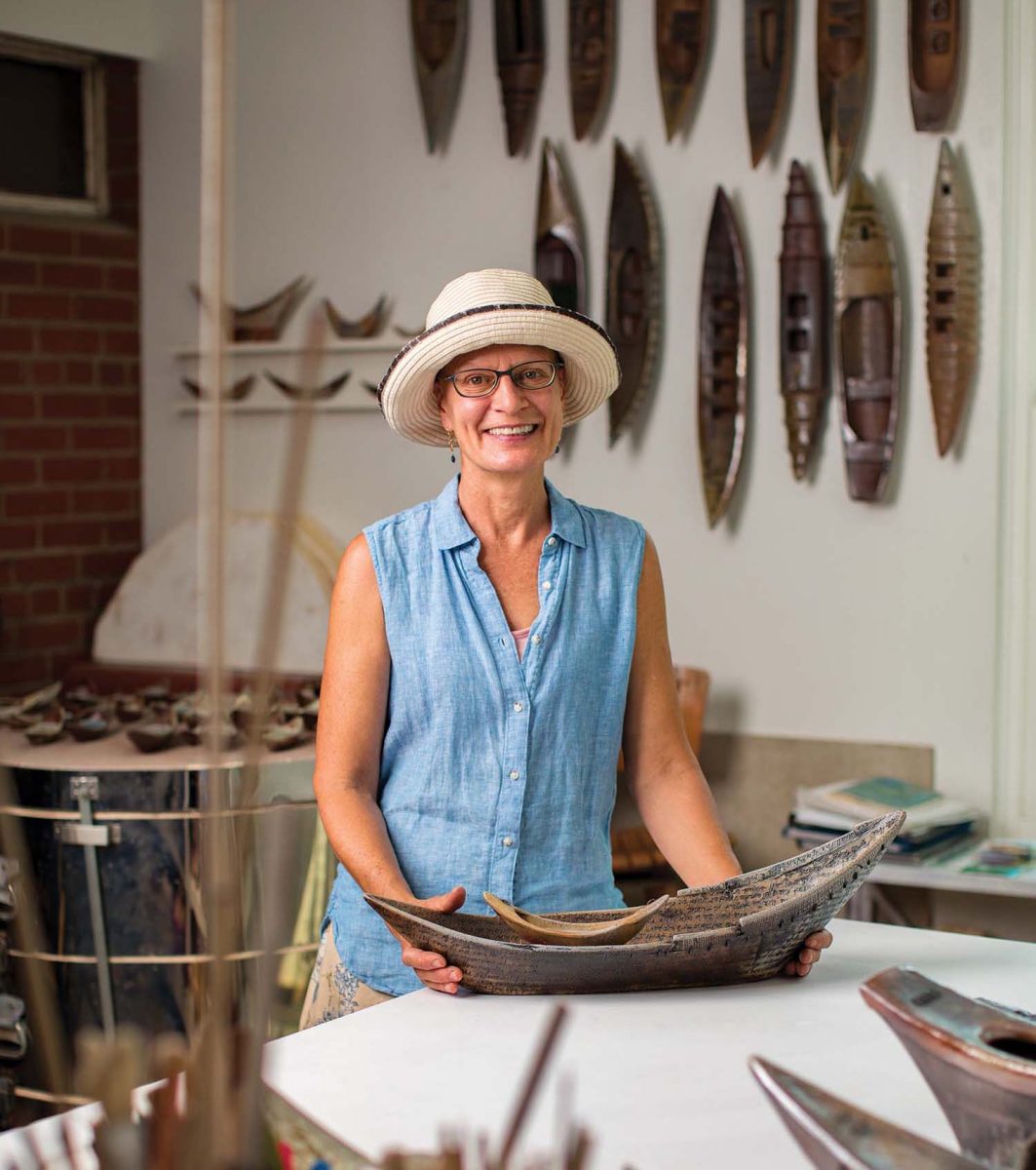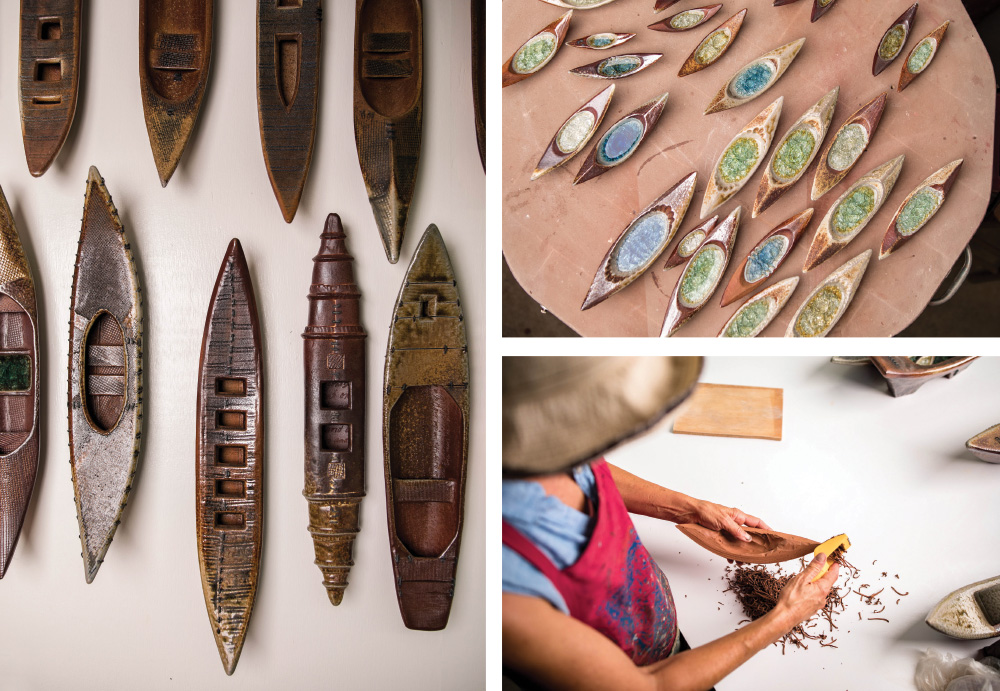
Seed pods are one of the main inspirations for the vessels. Photo by Jack Robert
A fire in 1996 destroyed Heather Allen Hietala’s childhood home and all its contents, but ultimately sparked in her a deep curiosity for wood-fired ceramics that’s been the foundation of her work for nearly 20 years. “I grew up with wood fires for heat through long winters. I had to come to peace with wood fire again, to see it as something positive rather than destructive,” she says.
An epiphany occurred as she was sifting through the ruins. She came across the metal family recipe box, opened it, and saw all the cards turn to ash before her eyes. “Metal was the only thing that survived the intense heat. I wanted to find a way to write words that could survive a fire.”
Well before she came to ceramics, Hietala built a successful career as a fiber artist, known for her vibrant, decorative textiles depicting staircases and doorways. “The staircase was my vehicle, my imagery,” she says. “Going up and down, the landings, doors that open and shut. All the symbolism about taking a journey.”

Hietala was raised in an old home defined by a simple, Shaker aesthetic. The family lived at the end of a dirt road in the foothills of the White Mountains, two hours from New England’s rocky coast, so she experienced snowy winters and summers sailing and paddling canoes. A grandmother painted and made puppets, and down the road lived sculptor Winslow Eaves and his wife, who hired her as a teenager to assist around the home in exchange for studio time. While in high school, Hietala spent a year living with a family in Japan as an exchange student. “The Eaves[es] showed me it is possible to live life as an artist,” she says, while her time in Japan reinforced her affinity for a simplified sensibility.
Hietala received a BFA in sculpture and painting from the University of New Hampshire, also exploring printmaking and collage; she returned to Japan and backpacked across Asia and Europe, then earned an MFA in textiles from University of MA Dartmouth. She authored a book, Weaving Contemporary Rag Rugs (later translated into Japanese), exhibited nationally and internationally, and taught at Arrowmont School of Arts and Crafts and Penland School of Craft, where she was when the fire occurred.
In 1998, not long after moving to Asheville, Hietala was commissioned by Biltmore Estate to replicate the bed canopy and drapes in the Morland Room; in 2007, she began nearly two years of meticulous embroidery on the four pelmets in the second-floor living hall. Those projects epitomize the approach she brought to clay when she began working with it “on the side” for many years until she understood the pieces she was making.
“I have patience,” she says with a smile. “Clay is usually immediate; you get it done and if you don’t like it, you smush it and move on. I come to clay from a textile background, which is very labor intensive.”

Before she was a sculptor, Hietala embroidered for Biltmore. Photos by Jack Robert
From the start, her vehicle was long, narrow vessels, pointed at each end — a shape influenced by seed pods, loom shuttles, and canoes. She took a class in hand building and developed the techniques she uses today: rolling out slabs of clay, applying texture to the surface, and allowing the piece to sit undisturbed for up to three months, conditioning. Then she flips the slab over, and, on the smooth side, writes the words that indelibly mark her vessels. “I don’t plan what I will write,” she says. “It’s in the moment — always to do with the journey of life and what the vessel may encounter.”
If the clay suffers a split while she’s forming the vessel, she channels her childhood lessons to mend it with welding wire. The final step is the wood fire. “I make pretty tight forms, but once you put it in the kiln, you have no idea what you’ll get,” she admits. “The kiln gods have their way, and I embrace that.”
Her vessels are hung on the wall in groupings — always with one more paddle than boat — and sold as such. She also has heavier sculpture meant for flat surfaces, onto which she may add a mast and rigging of linen and cotton thread.
Hietala has been experimenting with filling her boat forms with broken glass before they go into the kiln. The glass goes through a metamorphosis, melting and then solidifying with multiple cracks and emanating light — the antithesis of the clay it inhabits.
“So many things in life get broken,” she muses, “and we have all been through something. Ideally, we go through a metamorphosis and become beautiful again: maybe more beautiful because of the cracks.”
Heather Hietala, West Asheville. The artist is represented by Momentum Gallery, 52 Broadway, downtown Asheville, momentumgallery.com. For more information, see heatherhietala.com.
